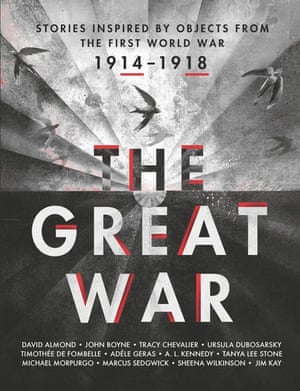Ghost soldier by Theresa
Breslin (Doubleday, 2014)
33 chapters; 291 pages (but fairly large print)
Subjects: World War
One, England, Borders, Scotland, trains, animals, dogs, hospitals, junior
fiction (Year 5-8)
Synopsis
The author’s website calls this “a mystery plus detective story
with poignant scenes as two children, in a desperate search for their
‘missing-in-action’ father, meet the staff and wounded men on the hospital
trains that stop near their farm”. The
mystery/detective element is related to strange goings-on in an old house in
the woods, a suspected German spy and a shadowy ghost figure in an upstairs
window.
I liked the
relationship between brother and sister Rob and Millie; the focus on how those
at home coped – or didn’t cope - while the husbands and fathers were away at
war, and the details about how dogs could be taken away by the army (which is
why they try to save their puppy, and how they end up hiding it at the old house
in the woods). Thousands of dogs were
needed in the war so many families must have had to give theirs up, willingly
or not. The story of the ambulance
trains was interesting, too, although I was never clear about whether
they did or didn’t try to take injured soldiers to a hospital near their
home.
I found some of the
action a bit hard to believe; either too many coincidences, or too unlikely (would
they really have let the children on board the train? would they have let the
wounded soldier wander round the grounds so freely at night?) but this post by
the author about her research suggests that the
ambulance trains did stop in the countryside like this.
Reviews:
In this review,
Theresa Breslin said she started writing the book because she “was asked to provide a story for a
film company and this was a story I felt needed to be told”. So I wonder if
that means there is a film underway?
Author’s website
I didn’t know
anything about Theresa Breslin before I read her book Remembrance, but according to
her website, she was born and brought up in a small town in Scotland, worked as
a mobile librarian, has written over 30 books for children and young adults and
won the Carnegie Medal for Whispers in
the graveyard (1994) about a dyslexic boy. Her website also provides teaching notes for the book.
Other
books you might like:
Remembrance is another
book about World War One by Theresa Breslin, but for older readers.
The Anzac puppy by Peter Millett and Trish Bowles is written for younger readers about a dog in war time.
Things I didn’t know
The details about
blood transfusion are intriguing. Today we take blood banks for granted
but back in WW1 they were still figuring out the science of blood groups and
anticoagulants.
You can read about "A brief history of blood transfusion" at the Institute of Biomedical Science, or find out more at the Science Museum.
You can read about "A brief history of blood transfusion" at the Institute of Biomedical Science, or find out more at the Science Museum.



